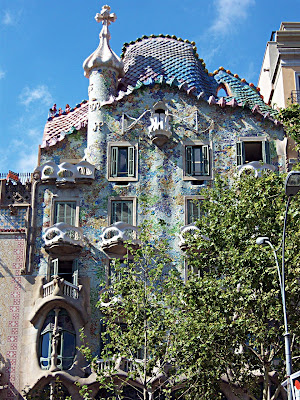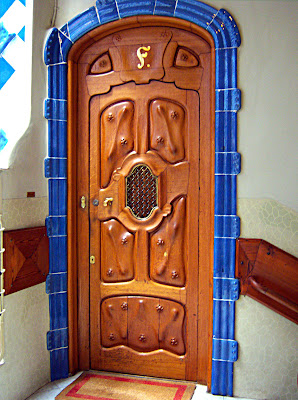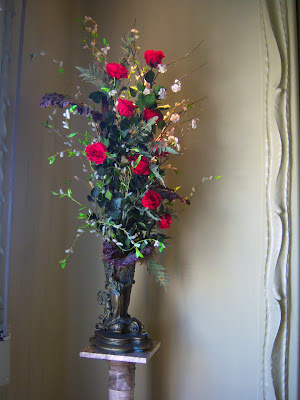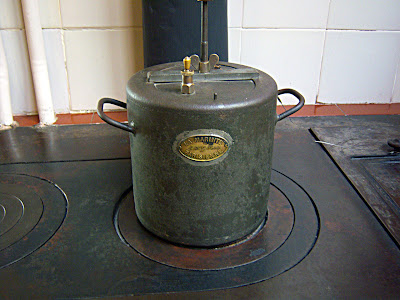"Qui us la fa la casa, en Domenech, en Gaudi o en Puig y Cadafalch?" meaning "Who will build the house for you, Domenech, Gaudi or Puig y Cadafalch?" The Grand Master Gaudi was the winner... (1904-1906)









 The flat doors have not been numbered in the usual way, but follow the letters of the alphabet starting at the bottom and going up
The flat doors have not been numbered in the usual way, but follow the letters of the alphabet starting at the bottom and going up Chromatic graduation of tiles dominated by cobalt and dark blue as well as sky blue and pearl grey
Chromatic graduation of tiles dominated by cobalt and dark blue as well as sky blue and pearl grey The chimneys rise up each stretching out their helicoid trunk covered in trencadis of glass and colours and showing off their pointed conical cap, hoods with ceramic borders topped by balls which were originally made of glass and filled with different coloured sand
The chimneys rise up each stretching out their helicoid trunk covered in trencadis of glass and colours and showing off their pointed conical cap, hoods with ceramic borders topped by balls which were originally made of glass and filled with different coloured sand Rear facade
Rear facade
 Courtyard
Courtyard







 The building is formed around two large courtyards through which light enters into all the homes.
The building is formed around two large courtyards through which light enters into all the homes.






















































